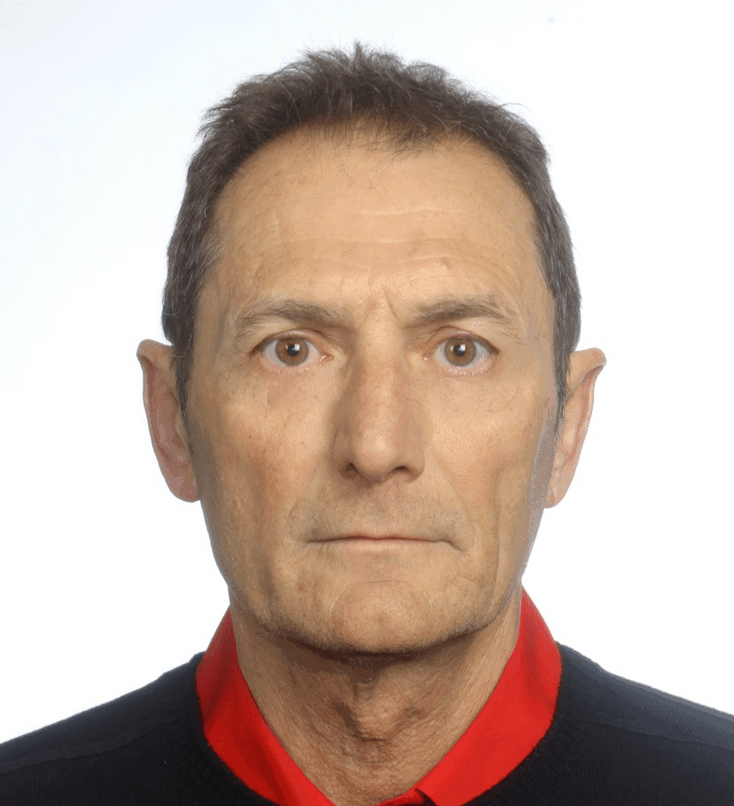



Acidification for intestinal health: How weaned piglets can benefit
A study into the benefits and considerations for the incusions of acids in dietsWeaning means separation from the sow, change of feed, new groups, and, therefore, stress for the piglets, impacting their feeding behavior and gut health. During this time after weaning, the piglets and, here, mainly gut health must be supported in the best way. Therefore, solutions including diets that not only provide the necessary nutrients but also avoid the most common digestive disorders are requested. Restrictions during the last years on antibiotics, growth promoters, and zinc oxide have even intensified the situation. They caused a lot of research to find solutions to increase or maintain productive outcomes.
An optimized diet combined with useful additives is the key
In the first run, it is important to know that piglets' intestinal health and their subsequent development can be influenced by the components of the feed:
- The content and composition of the fiber fraction of the feed
- the protein content and its origin
- the influence of certain minerals such as zinc and copper and
- the presence of probiotics, prebiotics, enzymes, and other nutraceutical additives
Additionally, different measures can be taken, from using high-quality ingredients to various additives or combinations of them. Among these additives, acidifiers (both organic and inorganic acids) have been widely used in recent years because of their positive effect on piglets' health, therefore, also on intestinal health, and thus production efficiency.
A lot of work has been done with different acidifying agents. However, there is a large variability concerning the response of the piglets to them (see table 1, the meta-analysis by Tung and Pettigrew, 2006). There is the question of the acid, of course, its dosage and the time of supply, but also the pigs' age and growing phase, their health status, the rearing conditions, and the diet have an influence.
Mode of action of organic acids
Different mechanisms have been proposed and validated to explain the action of acidifying agents. The reduction of the stomach and intestinal pH promotes a reduction of microbial activity and a change in the stomach and intestinal microbiota. Additionally, due to its effect on pepsin, it improves digestibility, especially of the protein fraction. The metabolic impact of acids due to their energetic contribution cannot be neglected, as well as their input of other highly digestible nutrients if their salts are used.
Acidification of the digesta
The gastric pH of the newly weaned piglet is often at levels of 5 or higher in the post-weaning period (Suiryanrayna and Ramana, 2015) and, therefore, higher than that of an adult pig. Causes are still poor HCl production, lack of lactic acid due to discontinued lactose fermentation, and ingestion of large amounts of solid feed in contrast to small intakes of milk during lactation and at infrequent intervals. Any action we take to lower the pH will, in theory, lower or modify the microbiota of the stomach or intestine.
Acidification of diets decreases their pH (from 3.73 to 3.66, see table 1), but the data do not suggest a decrease in pH of the stomach or the other gastrointestinal contents.
The table shows that, e.g., in the stomach, an acidified diet reduced the pH in 55% of the cases; in 36%, the pH increased, and in 9% of the cases, it didn't change. The authors, therefore, concluded that diet acidification has little influence on gastric pH.
Table 1: Effects of dietary acids on gastrointestinal contents' pH values (modified from Tung and Pettigrew, 2006).
Number of observations |
|||||||
Description |
Control |
Acidifier |
Total |
Positive |
Negative |
Similar |
P value |
Diet |
5.95 |
4.71 |
59 |
0 (0.0%) |
58 (98.3%) |
1 (1.7%) |
0.0001 |
Stomach |
3.73 |
3.66 |
22 |
9 (36.4%) |
11 (54.6%) |
2 (9.0%) |
0.519 |
Small intestine |
6.83 |
6.95 |
12 |
6 (50.0%) |
6 (50.0%) |
0 (0.0%) |
0.155 |
Cecum |
6.14 |
6.14 |
11 |
7 (63.6%) |
4 (36.4%) |
0 (0.0%) |
0.862 |
Colon |
6.60 |
6.60 |
11 |
3 (27.3%) |
8 (72.7%) |
0 (0.0%) |
0.906 |
The buffering capacity influences the effectiveness of the diet
One factor influencing the pH in the stomach and the acid's effectiveness is the buffering capacity of the diet. A high buffering capacity possibly compromises the effect of the secreted acids in the piglets' stomachs. So, this type of diet will require the addition of acids, but at considerable levels. Diets with high buffering capacity usually have high protein and mineral levels, especially calcium, fishmeal, and other products that provide vegetable proteins.

Measuring the pH in the stomach is not so easy!
One of the main problems in measuring the pH of stomach content is its heterogeneity and the different values in the diverse parts of the stomach. This heterogeneity makes it sometimes challenging to compare various studies and authors. Although it is assumed that, within a trial, the techniques are the same, and the data will be consistent. In addition, the time between the last food intake and the time of gastric pH measurement greatly influences gastric pH. For example, formic acid administered at 1.8% to weaned piglets maintained gastric pH at values below 3 for a certain time after feed intake. However, when considering the mean of all sampling times from 0.5 to 8.5 h after feed intake, the gastric pH value was not affected by formic acid (Canibe et al. 2005). These results show that formic acid at high doses can help counteract the buffering capacity of the diet, at least for some time. However, simultaneously, they show that sampling time can often explain the different results between different studies.
Modification of the gastrointestinal microbiota
The low pH of the gastric contents of pigs is supposed to kill or inhibit the growth of ingested bacteria. For this antimicrobial capacity, the non-dissociated form of the carboxylic acid is essential. This form can diffuse through the cell membranes of microorganisms. Inside, in the cell cytoplasm, it dissociates. The ions alter the osmotic balance and pH of the microorganism; they block the enzymatic systems and the nutrient transport, leading to cell death without membrane lysis and the possible release of endotoxins (González Mateos 2007). Preconditions are the lipophilic character of the acid and the relatively high pH value inside the bacterial cell. They cause the acid to dissociate and break the cellular equilibrium. The effectiveness of acids depends on the bacteria, the type of acid, its dose, and the diet (Partanen, 2001). Aside from that, the section in which they are studied plays an important role.
What about the influence of acids on lactobacilli and coliforms?
Despite the received opinion, acids increase the number of coliforms and E. coli in the stomach (see table 2). However, the variability is too high to venture the guess about what happens in other parts of the intestinal tract.
Table 2. Effect of organic acids on the microbiota in the piglet stomach (adapted from Franco et al. 2005)
Control |
Formic |
Formic + Fumaric |
Formic + Lactic |
Formic + Lactic |
|
Acid level in the diet, % |
0.00 |
0.96 |
1.06 |
1.38 |
1.24 |
Lactobacilllus1 |
7.99 |
7.31 |
6.43 |
7.73 |
6.84 |
Coliforms1 |
3.05 |
3.67 |
4.77 |
3.32 |
3.88 |
[1] Log10 per gram or mL
In the small intestine as well as in the cecum, the numbers of lactobacilli plus bifidobacteria were reduced. Also in the colon, both Lactobacillus and E. coli were decreased when formic acid or its calcium salt was included in the diet. It is unclear whether this suggests that acids reduce the total number of bacteria in the large intestine. Results were even more variable when other acids or their sodium salts were used.
What are the reasons for the high variability of effectiveness?
The inconsistent effects along the gastrointestinal tract are probably related to the lack of sufficient amounts of undissociated acids downstream of the stomach, which ultimately affects the antimicrobial action of organic acids. Indeed, in many cases, organic acids supplemented with the diet can be found in higher concentrations than the unsupplemented control only in the stomach and the proximal small intestine. Then, they disappear in the distal small intestine and large intestine contents (Zentek et al., 2013). In the case of medium-chain fatty acids (MCFA), caprylic acid and, to a lesser extent, capric acid at 0.3 % allowed reducing E. coli counts in both jejunum and cecum contents of weaned piglets (Hanczakowska et al. 2016). Mixtures of organic acids and MCFA showed variable results. Either they reduce E. coli and increase microbial diversity in the colon or do not affect fecal or large intestinal microflora at all (Li et al. 2018).
In short, acids generally reduce Lactobacillus populations in the gut and E. coli in the colon. So, we can say that acids alter the microbiota of the digestive tract, but the manner of this alteration needs a validation method.
Table 3: Effect of organic acids on the microbiota in the small intestine of the piglet (adapted from Franco et al. 2005).
Control |
Formic |
Formic and Fumaric |
Formic + Lactic |
Formic and Lactic |
|
Acid level in the diet, % |
0.00 |
0.96 |
1.06 |
1.38 |
1.24 |
Lactobacillli1 |
7.85 |
7.20 |
6.53 |
7.06 |
6.50 |
Coliformes1 |
6.42a |
5.92ab |
5.34abc |
4.33c |
4.44bc |
[1] Log10 per gram or mL
Table 4: Effect of organic acids on the microbiota in the piglet large intestine (adapted from Gedek et al. 1992)
Formic acid level in the diet, % |
0.00 |
0.60 |
1.20 |
1.80 |
2.40 |
|
Cecum |
Lactobacilli/Bifidobacteriai |
8,50a |
7,90 ab |
7,30b |
7,60b |
7,70b |
E. coli i |
7,00a |
5,70b |
5,70b |
6,00b |
6,10b |
|
Colon |
Lactobacilli/Bifidobacteriai |
8,70a |
7,70b |
7,20b |
7,60b |
7,60b |
E. colii |
7,20a |
6,40b |
5,90b |
5,90b |
6,10b |
[1] Log10 per gram or mL
Change of microbiome indicated by modified fermentation patterns
Organic acids have the property of modifying fermentation patterns as well as ammonia production in the gut. This was demonstrated in in-vitro studies, whereas the results of in-vivo studies in this regard were more variable. Formic acid at doses between 0.3% to 3% did not alter the production of ammonia and volatile fatty acids along the gastrointestinal tract (Gabert and Sauer 1994). However, in other studies, formic acid or its salts increased acetic acid and decreased lactic acid concentrations in the ileum, cecum, and colon contents (Canibe et al. 2005). These findings may indicate a change in the composition of the intestinal flora and modulation of microbial fermentation with more nutrients (such as glucose not fermented to lactic acid) or metabolites (such as acetate) available to the piglet (Tugnoli et al. 2020).
Acids also show metabolic effects
The main metabolic effect of acids in piglets is energy supply due to their inherent energy. Besides that, acids and their salts provide other nutrients such as minerals to the diet that are usually highly digestible. This is the case for calcium formate, which additionally helps reduce calcium carbonate and its high buffering capacity. Other acids such as butyric acid are a source of energy for enterocytes in the intestine.
Another metabolic effect of acids occurs at stomach level. As a source of chlorine, they activate pepsinogen and, as a result, protein digestibility. In addition, acids play a role in the animal's metabolism, most notably butyric acid, and all medium chain fatty acids (MCFA).
Table 5: Physical and chemical properties of the most used organic acids as dietary acidifiers (Roth, 2000).
Substance Acidity |
pKa |
Solubility in H2O |
Molecular weight, g/mol |
Gross energy, kJ/g |
Appearance |
Formic |
3,75 |
++ |
46 |
5,8 |
Liquid |
Acetic |
4,75 |
++ |
60,1 |
14,8 |
Liquid |
Propionic |
4,88 |
++ |
74,1 |
20,8 |
Liquid |
Lactic |
3,88 |
+ |
90,1 |
15,1 |
Liquid |
Fumaric |
3,03/4,38 |
- |
116,1 |
11,5 |
Solid |
Citric |
3,14/4,76/6,39 |
+ |
210,1 |
10,3 |
Solid |
Sorbic |
4,76 |
- |
112,1 |
26,5 |
Solid |
Calcium formate |
- |
- |
130,1 |
3,9 |
Solid |
Sodium formate |
- |
++ |
68 |
3,9 |
Solid |
Calcium propionate |
- |
+ |
186,2 |
16,6 |
Solid |
pK a = -log10 ([H+] [A-]/[HA]).
Solubility: ++/+/- high, middle, low.
Organic acids can be applied in different forms
During the last few years, acid coating or microencapsulation techniques have improved the action of acids in animals and also their practical handling at the factory and farm levels. Microencapsulation improves palatability, enabling a higher dosage of the acid. Furthermore, a higher amount of acid reaches the intestine if there should be the intended action. Microencapsulation is mainly done with lipids digested in the animal's duodenum. This effect can have good or bad consequences, and everything will depend on the objective of its addition. If a decrease of the stomach pH is wanted, encapsulation is not the right way. If, however, the reduction of coliforms in the intestine is targeted, encapsulation is the best way to achieve this goal.
Too high levels of acids in their pure forms that are more volatile than their salts can cause appetence problems. Their salts, however, are less problematic. These will have no effect on the pH of the feed but once ingested, they will dissociate and will have an effect (to a certain extent) on the pH of the gastrointestinal tract (González Mateos, 2007).
Conclusions
The inclusion of acids in piglets' and pigs' diets in general consistently increases productive performance under practical farming conditions. However, there is high variability in terms of decreasing the pH of the gastrointestinal contents, increasing protein digestibility, as well as modulating the microbiota so that they exert an essential role in the intestinal health of the piglet.











